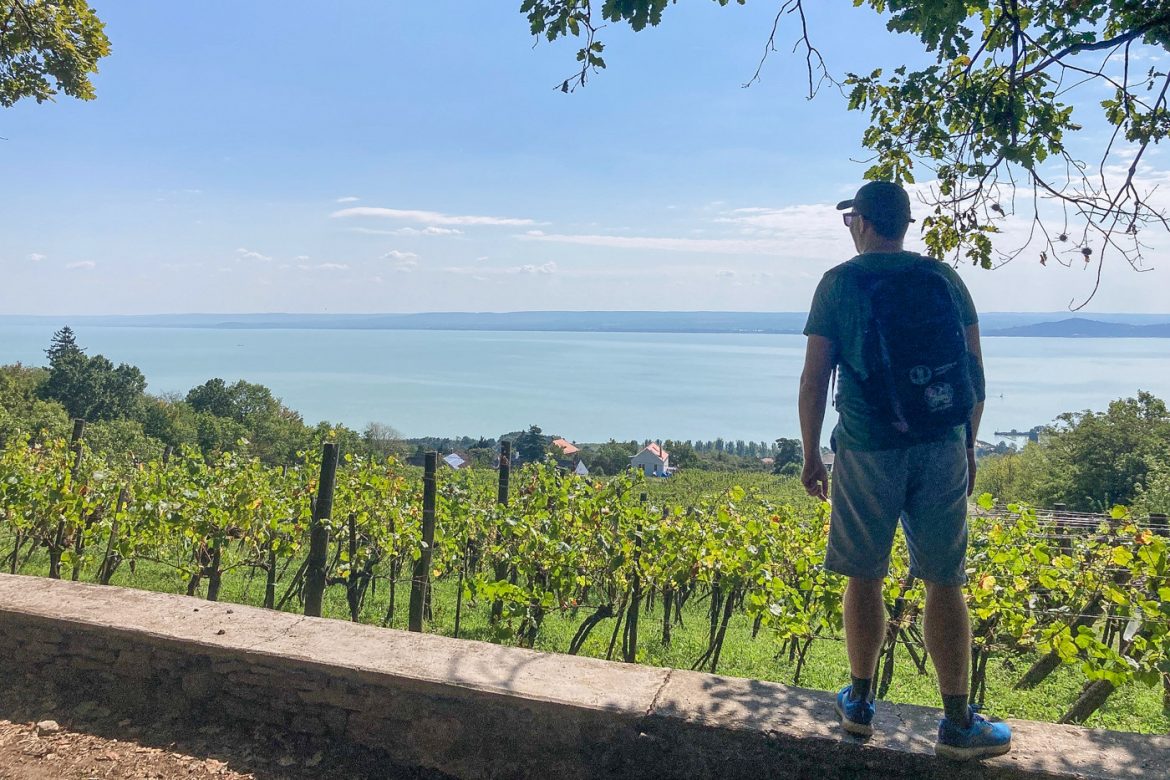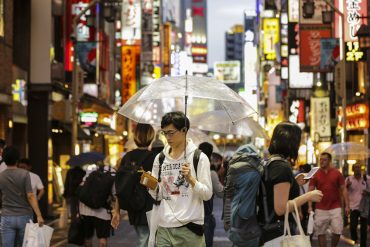Barely one hour away from the bustling metropolis of Budapest lies the largest lake in central Europe, the Balaton, also known as the Hungarian Sea. Once a mythical summer holiday destination during the communist era, where Eastern and Western Europeans were allowed to mingle, Lake Balaton remains today hugely popular with Hungarians but its nostalgic charm, warm waters and excellent wines are increasingly seducing also travellers from abroad.
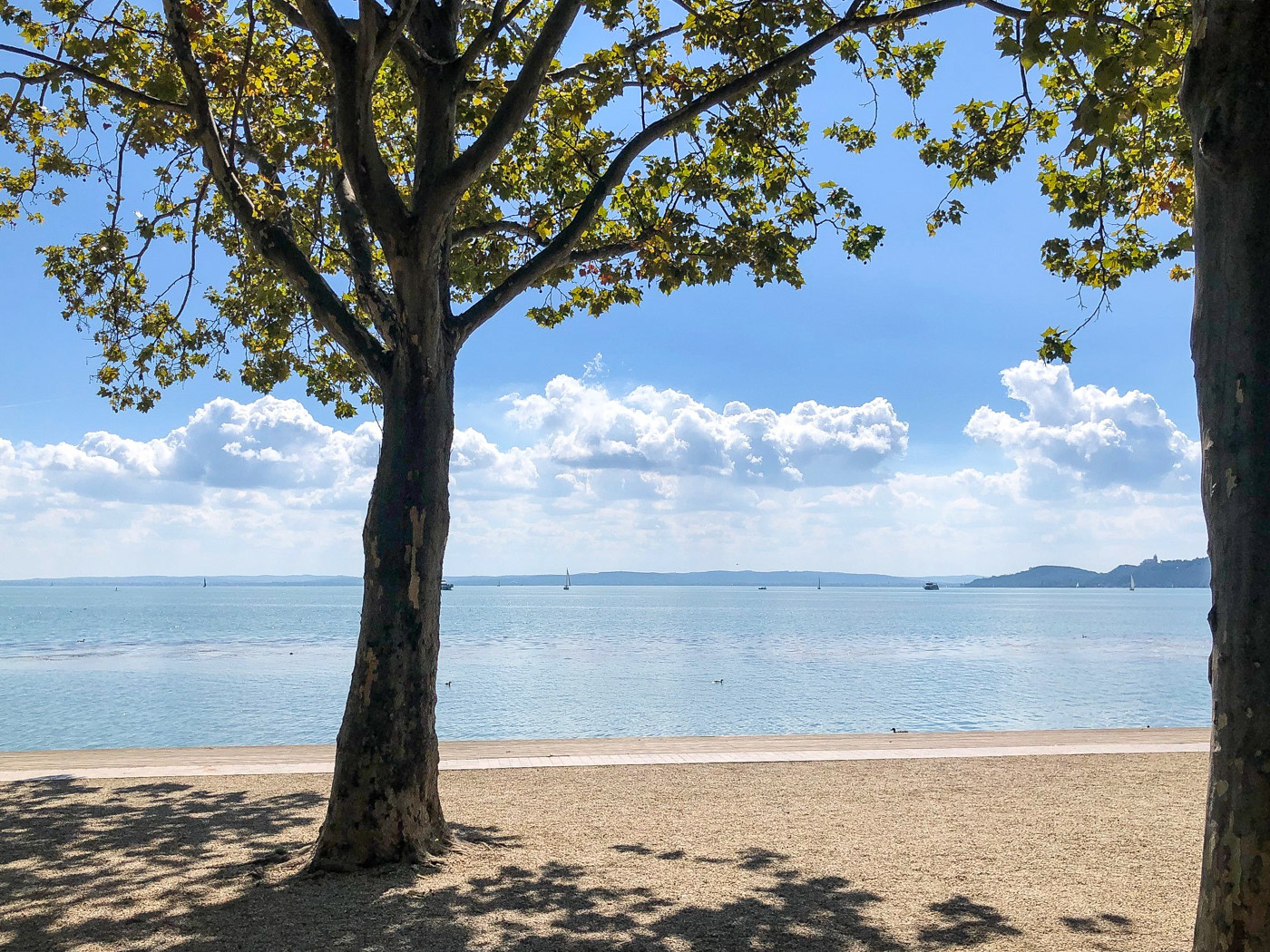
My first visit to Lake Balaton was also my first trip in a country of the former Communist bloc, and thus an unforgettable adventure: I was sixteen and our high school class joined a youth camp on the southern shores of the lake. Memories are hazy but include barackpálinka (local apricot alcohol) cheaper than mineral water and sunset swims in the warm, shallow waters of the lake.
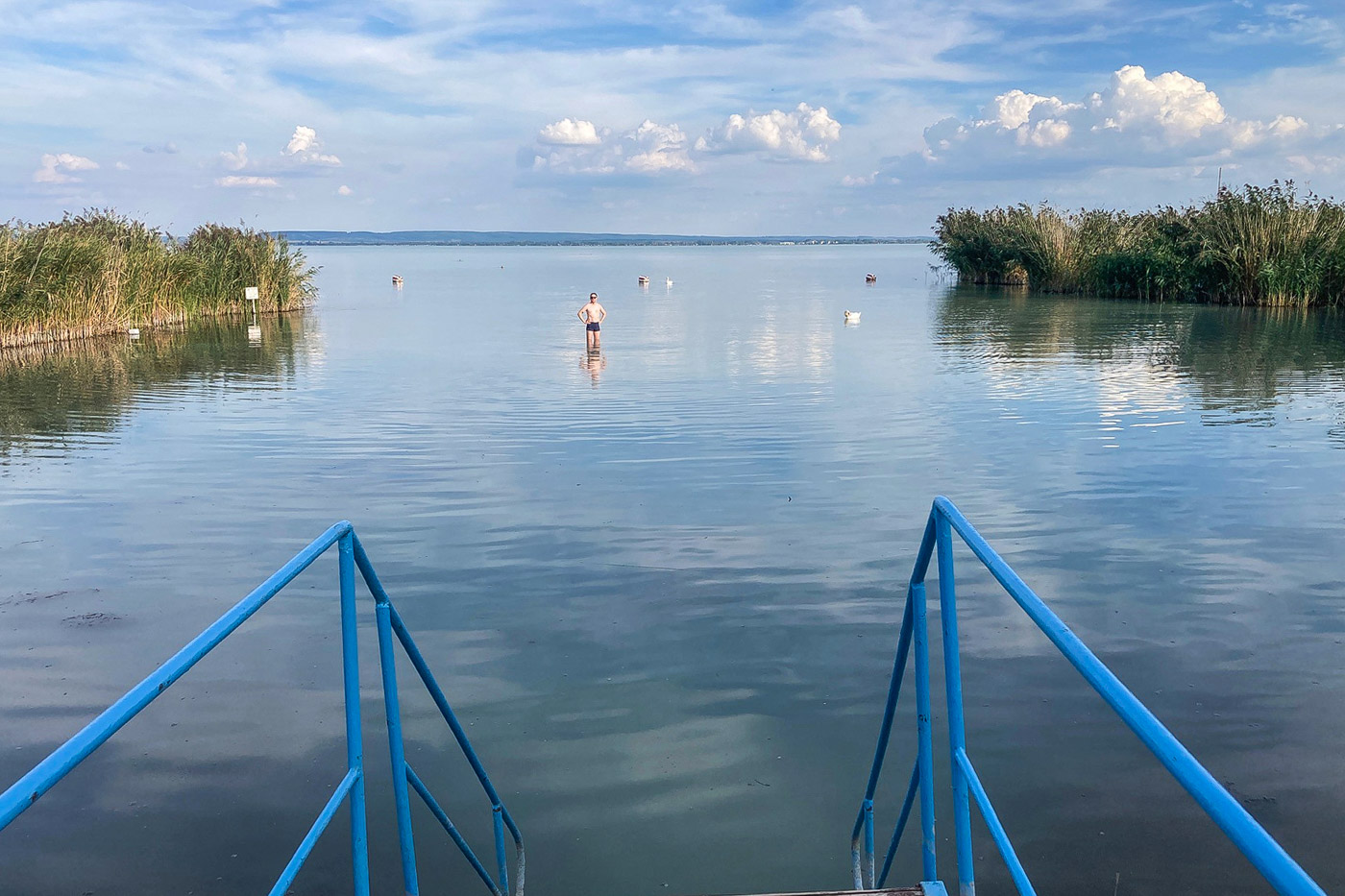
It took me more than a quarter of a century to return to Hungary, and I was curious to see who changed more, this country or myself. Well, in all these years, Hungary has changed a lot and is now a full member of the European Union, although relations have been tumultuous, especially in recent years. However, with the exception of the capital Budapest, the country remains off the beaten track for most Western Europeans. Although modernization has reached Lake Balaton for many years, the nostalgic spirit of the old days, when the area was known as the Communist Riviera, is still present in many places along the lake where time seems to have stopped (with a few notable exceptions).
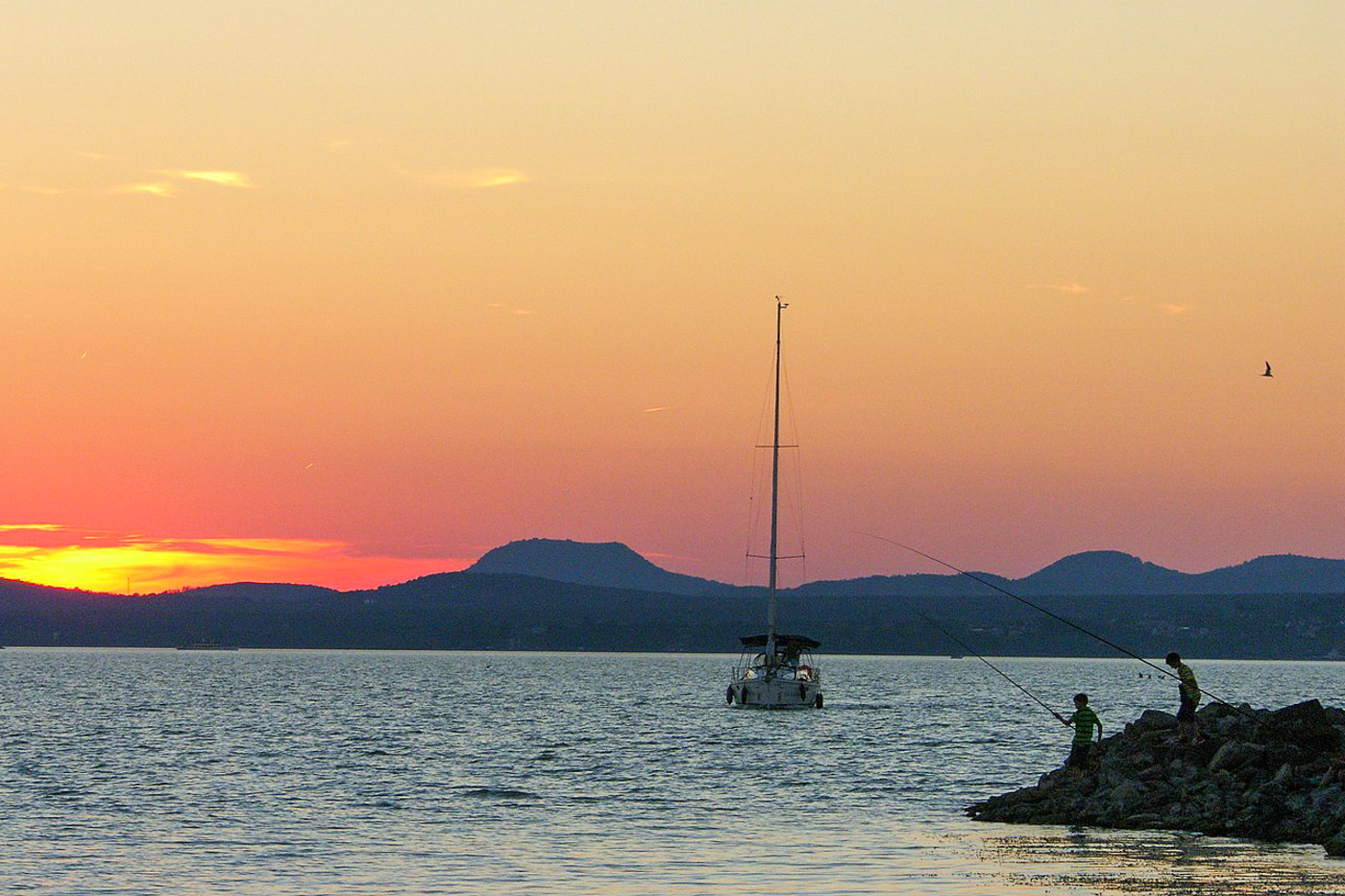
Our first approach to the lake is its southeastern edge, near the tourist hub of Siófok: the beach club Aliga is located in the village of Balatonaliga and was for decades the setting for endless summer reveries in the communist party resort: high-ranking foreign guests included former Soviet leaders Nikita Khrushchev and Leonid Brezhnev, cosmonaut Yuri Gagarin, East German leader Erich Honecker and Fidel Castro. Today, Club Aliga is a quaint family resort with hundreds of metres of shallow water and sandy soil, perfect for children and adults alike.
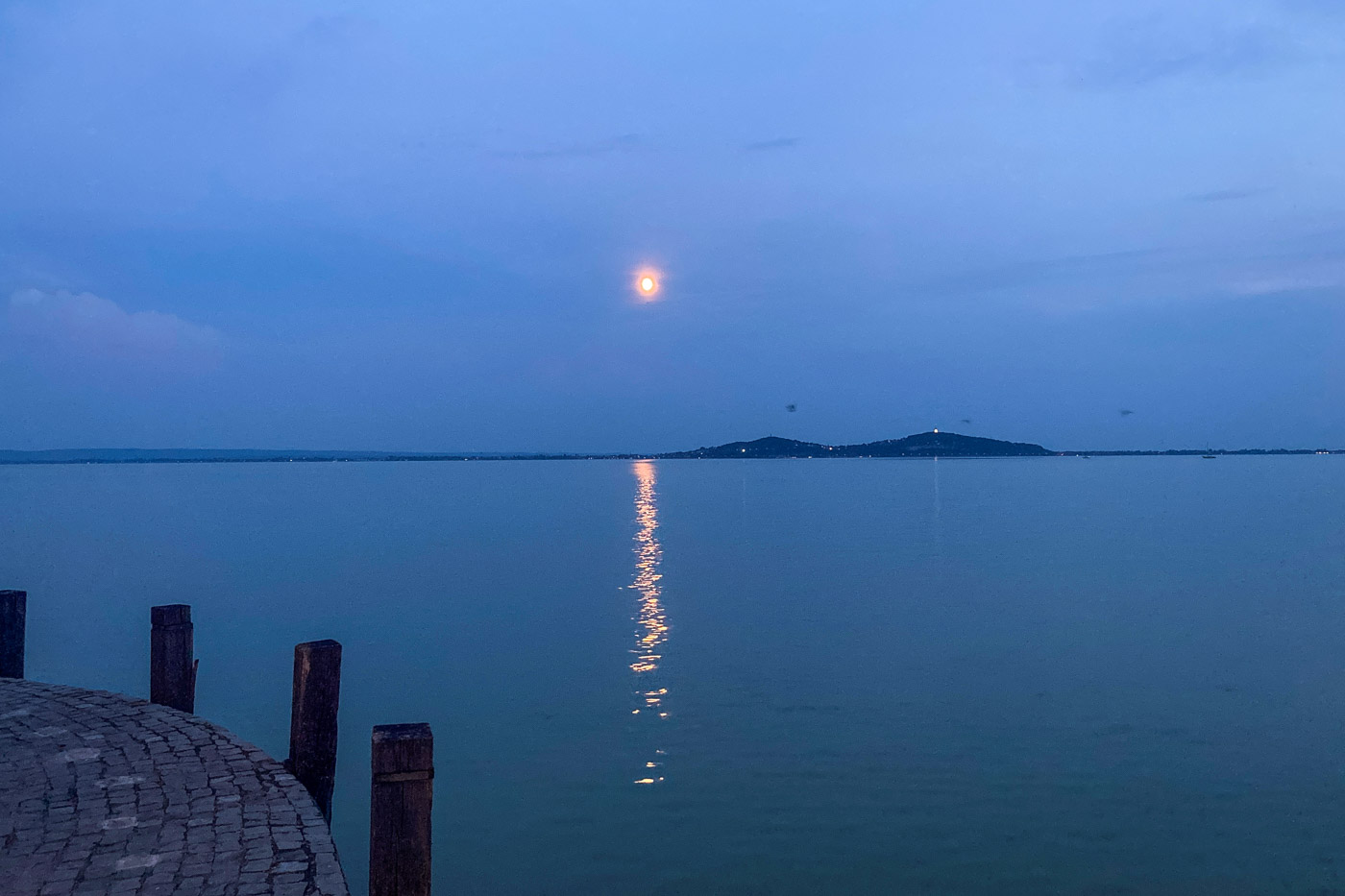
The water on the southern shore is especially shallow (the maximum water height in the centre of the lake is only 3m) and the ground is surprisingly sandy and pleasant to walk on. The wide expanse of the water body almost makes your forget that this is a lake and not an inland sea. After a pleasant bath – the water temperature can reach 27°- we enjoy the typical Balaton beach food: Lángos, a deep-fried pastry topped with sour cream and cheese, and Hekk, fried fish, both a familiar taste for generations of Hungarians who spent their summers on Lake Balaton.
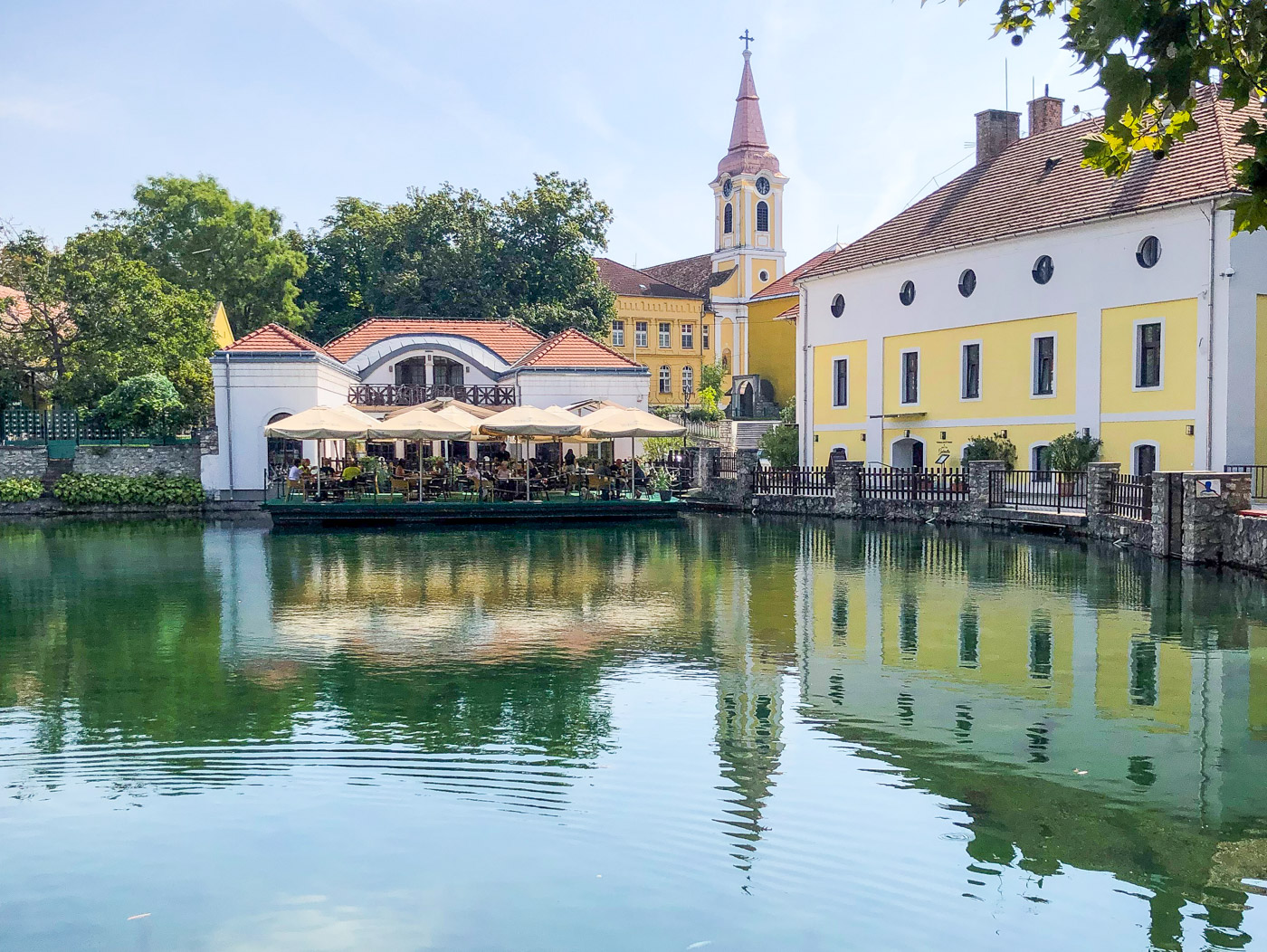
While Siófok offers a range of bars and clubs for young people, the northern shore, centred on Balatonfüred, is a little more sophisticated, with spas, vineyards and historic towns. This is where we spend the second half of our journey, starting in Balatonfüred, once a famous spa town. Today it is a pleasant little town, ideal for a walk along the lake and a coffee in one of the many bars. After a break, we head to the peninsula of Tihany, a nearby volcanic rock, famous for its Benedictine abbey and lavender fields. The Tihany hilltop showcases great views of the lake and helps to understand its impressive dimensions (Balaton has a circumference of almost 200 km); after a stroll through the streets of the Tihany village we continue west towards Badacsony, where we will spend a few more days. This is maybe the most beautiful part of lake Balaton, from a geomorphological perspective: the volcanic hills of the Badaconsy-Tapolca region are covered with vineyards and forests, offering beautiful hiking and a distinct Mediterranean touch and lifestyle.
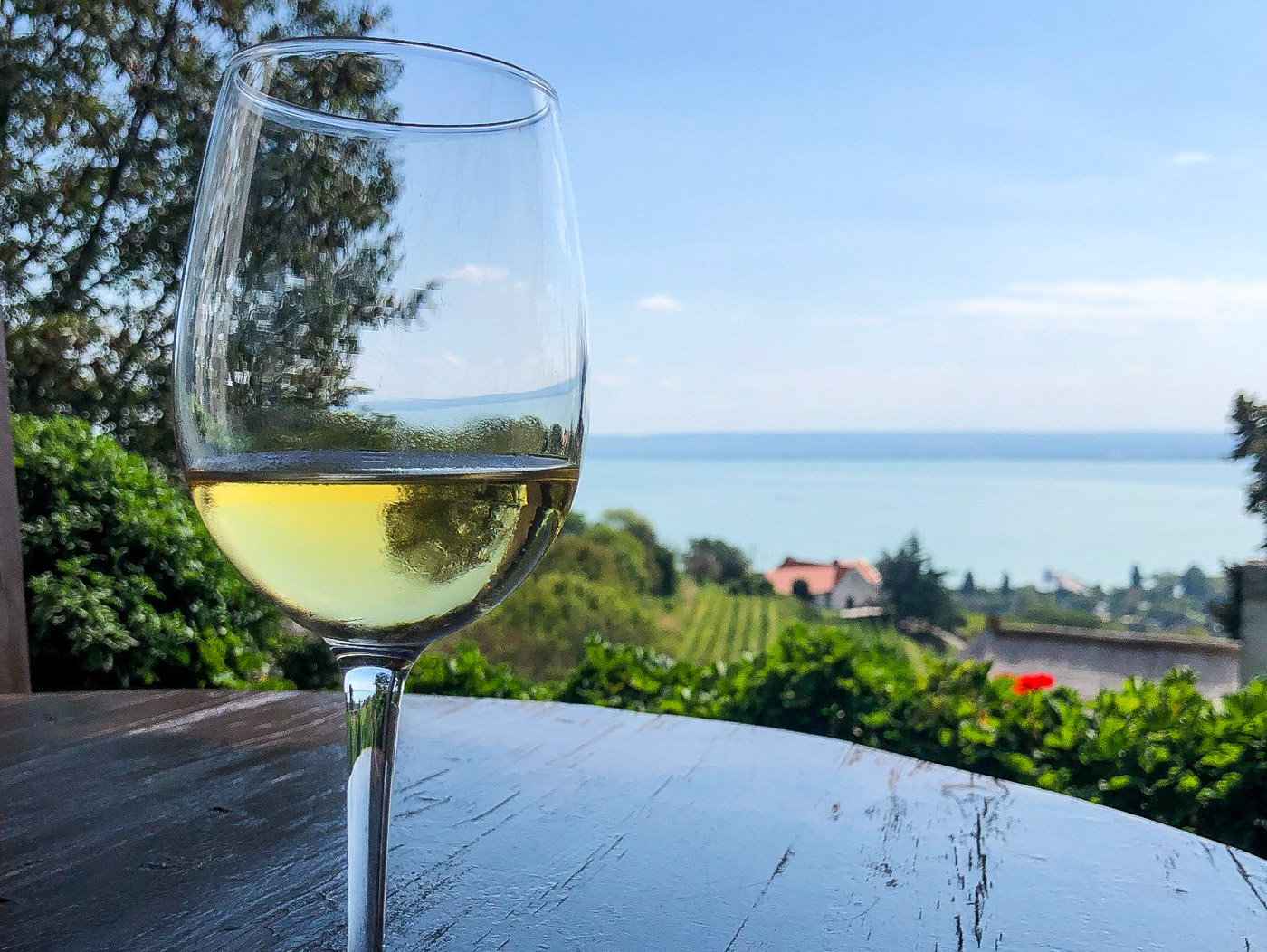
It may come as a surprise, but Hungary is one of the largest wine producers in the world and a true leader among the other Central European countries. This is the result of a suitable microclimate, rich volcanic soil and, of course, the Hungarian love of wine. The region is dotted with wineries and small wine bars in the countryside, where you can taste the excellent white wines produced in the area: try Olaszrizling, a typical Central European grape variety not related to the Mosel Riesling, or Irsai Olivér, a local grape that is a real surprise: rich in bright, fragrant Muscat notes, this fresh, fragrant wine is typically more popular in the warm, sunny months.
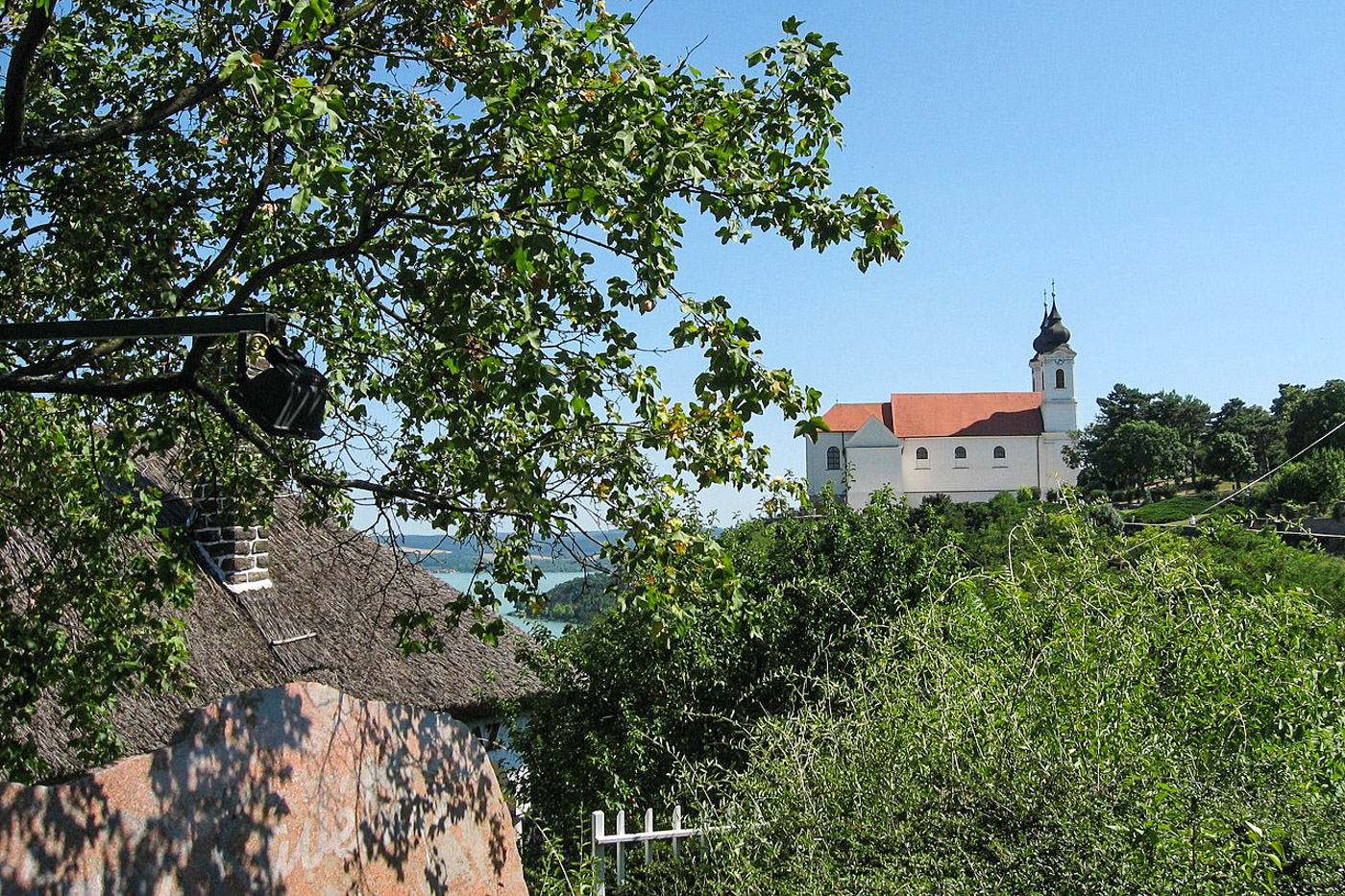
Once you’ve had enough of hiking, wine and swimming in the lake, there are some not-to-be-missed cultural activities around the lake region: we took a boat trip on a cave lake in Tapolca, and soaked up the monarchical atmosphere at Keszthely Castle and in the historic towns of Székesfehérvár and Veszprém. The city of Veszprém, which includes the northern shore of Lake Balaton, will also be European Capital of Culture in 2023. So now is the time to (re)discover Lake Balaton and its natural and cultural sights!
Check out these interesting websites if :
- Interested in Hungarian wines
- Interested in knowing more about Veszprém
© All photos by Zsusanna Gaál and Rob Weis, except the ones credited otherwise


